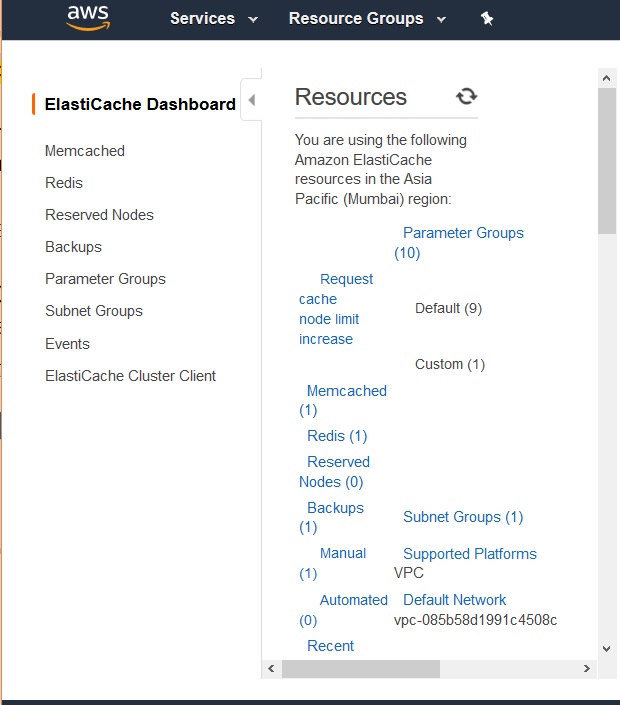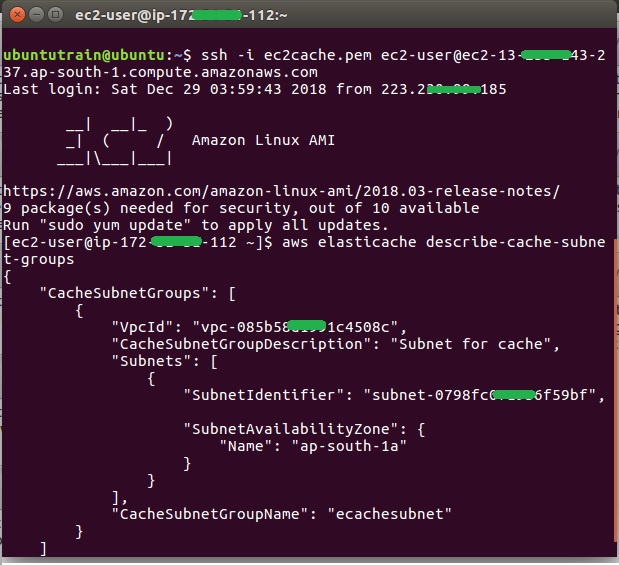
- AWS ElastiCache Tutorial
- Home
- Overview
- Environment
- Interfaces
- Launching Cluster
- Viewing Cluster Details
- Cluster Endpoints
- Accessing Cluster
- Modifying Cluster
- Rebooting Cluster
- Adding Nodes
- Removing Nodes
- Scaling the Clusters
- Delete Cluster
- Redis Shards
- Parameter Group
- Listing Parameters
- Deleting Parameters
- Engine Parameters
- Backup and Restore
- Monitoring Node - Metrics
- Memcached & Redis
- Accessing Memcached Cluster
- Lazy Loading
- Write Through
- Add TTL
- Memcached VPC
- Creating Memcached Cluster
- Connecting to Cluster in VPC
- Delete Memcached Cluster
- IAM policies
- SNS Notifications
- Events
- Managing Tags
- Managing Costs
- AWS ElastiCache - Resources
- Quick Guide
- Useful Resources
- Discussion
AWS ElastiCache - Interfaces
The ElastiCache set up in the previous chapter can aslo be done by one of the following methods. Below are the interfaces through we can interact with AWS ElastiCache.
AWS Management Console
The AWS Management Console is the easiest way to manage Amazon ElastiCache. The console lets you create cache clusters, add and remove cache nodes, and perform other administrative tasks without having to write any code. The console also provides cache node performance graphs from CloudWatch, showing cache engine activity, memory and CPU utilization, as well as other metrics.
The below diagram shows the ElastiCache dashboard after we login to the AWS console and navigate to ElastiCache service.

AWS CLI
You can also use the AWS Command Line Interface (AWS CLI) for ElastiCache. The AWS CLI makes it easy to perform one-at-a-time operations, such as starting or stopping your cache cluster. You can also invoke AWS CLI for ElastiCache commands from a scripting language of your choice, letting you automate repeating tasks.
The below diagram shows the result of AWS CLI command to describe the subnet groups we have for the ElastiCache clusters created.

AWS SDK
If you want to access ElastiCache from an application, you can use one of the AWS software development kits (SDKs). The SDKs wrap the ElastiCache API calls and insulate your application from the low-level details of the ElastiCache API. You provide your credentials, and the SDK libraries take care of authentication and request signing.